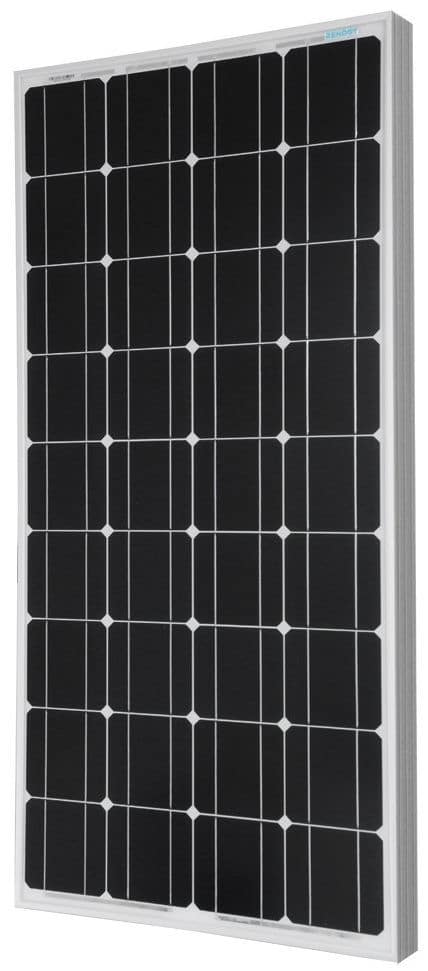
Connecting Solar Panels Together
How to Connect Solar Panels Together
![]() Connecting solar panels together is a simple and effective way of increasing your solar power capabilities. Going green is a great idea, and as the sun is our ultimate power source, it makes sense to utilize this energy to power our homes. As solar power becomes more accessible, more and more homeowners are buying photovoltaic solar panels.
Connecting solar panels together is a simple and effective way of increasing your solar power capabilities. Going green is a great idea, and as the sun is our ultimate power source, it makes sense to utilize this energy to power our homes. As solar power becomes more accessible, more and more homeowners are buying photovoltaic solar panels.
However, these photovoltaic solar panels can be very costly so buying them over time helps to spread the cost. But the problem then becomes how do we connect these extra solar panels together to increase the voltage and power output of what’s already there.
The trick here when connecting solar panels together is to choose a connection method that is going to give you the most energy efficient configuration for your particular requirements.
Connecting solar panels together can seem like a daunting task when you first start to look at how it should be done, but connecting multiple solar panels together is not that hard with a little thought. Wiring solar panels together in either parallel or series combinations to make larger arrays is an often overlooked, yet completely essential part of any well designed solar power system.
There are three basic but very different ways of connecting solar panels together and each connection method is designed for a specific purpose. For example, to produce more output voltage or to produce more current.
Solar photovoltaic panels can be electrically connected together in series to increase the voltage output, or they can be connected together in parallel to increase the output amperage. Solar pv panels can also be wired together in both series and parallel combinations to increase both the output voltage and current to produce a higher wattage array.
Whether you are connecting two or more solar panels, as long as you understand the basic principles of how connecting multiple solar panels together increases power and how each of these wiring methods works, you can easily decide on how to wire your own panels together. After all connecting solar panels together correctly can greatly improve the efficiency of your solar system.
Connecting Solar Panels Together in Series
The first method we will look at for connecting solar panels together is what’s known as “Series Wiring“. The electrical connection of solar panels in series increases the total system output voltage. Series connected solar panels are generally used when you have a grid connected inverter or charge controller that requires 24 volts or more. To series wire the panels together you connect the positive terminal to the negative terminal of each panel until you are left with a single positive and negative connection.
Solar panels in series add up or sum the voltages produced by each individual panel, giving the total output voltage of the array as shown.
Solar Panels in Series of Same Characteristics
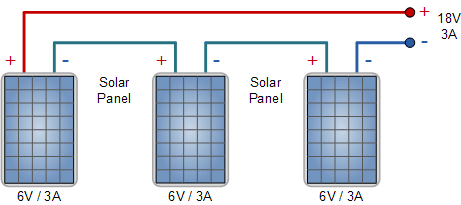
In this method ALL the solar panels are of the same type and power rating. The total voltage output becomes the sum of the voltage output of each panel. Using the same three 6 volt, 3.0 amp panels from above, we can see that when these pv panels are connected together in series, the array will produce an output voltage of 18 Volts (6 + 6 + 6) at 3.0 Amperes, giving 54 Watts (volts x amps) at full sun.
Now lets look at connecting solar panels in series with different nominal voltages but with identical current ratings.
Solar Panels in Series of Different Voltages
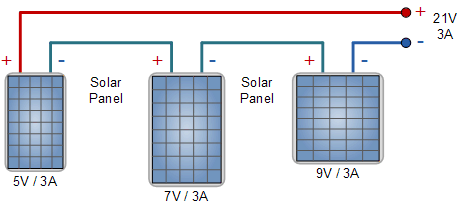
In this method all the solar panels are of different types and power rating but have a common current rating. When they are connected together in series, the array produces 21 volts at 3.0 amps, or 63 watts. Again the output amperage will remain the same as before at 3.0 amps but the voltage output jumps to 21 volts (5 + 7 + 9) .
Finally, lets look at connecting solar panels in series with completely different nominal voltages and different current ratings.
Solar Panels in Series of Different Currents
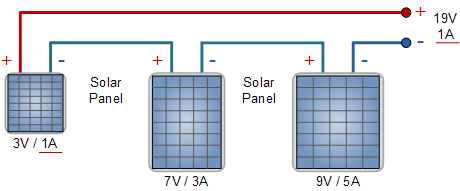
In this method all the solar panels are of different types and power rating. The individual panel voltages will add together as before, but this time the amperage will be limited to the value of the lowest panel in the series string, in this case 1 Ampere. Then the array will produce 19 Volts (3 + 7 + 9) at 1.0 Ampere only, or only 19 watts out of a possible 69 watts available reducing the arrays efficiency.
We can see that the solar panel rated at 9 volts, 5 amps, will only use one fifth or 20% of its maximum current potential reducing its efficiency and wasting money on the purchase of this solar panel. Connecting solar panels in series with different current ratings should only be used provisionally, as the solar panel with the lowest rated current determines the current output of the whole array.
Connecting Solar Panels Together in Parallel
The next method we will look at of connecting solar panels together is what’s known as “Parallel Wiring“. Connecting solar panels together in parallel is used to boost the total system current and is the reverse of the series connection. For parallel connected solar panels you connect all the positive terminals together (positive to positive) and all of the negative terminals together (negative to negative) until you are left with a single positive and negative connection to attach to your regulator and batteries.
When you connect solar panels together in parallel, the total voltage output remains the same as it would for a single panel, but the output current becomes the sum of the output of each panel as shown.
Solar Panels in Parallel of Same Characteristics
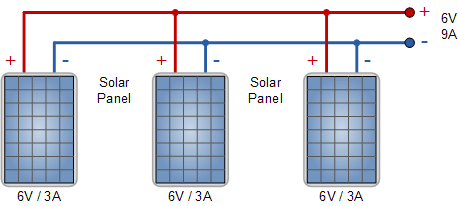
In this method ALL the solar panels are of the same type and power rating. Using the same three 6 Volt, 3.0 Amp panels as above, the total output of the panels, when connected together in parallel, the output voltage still remains at the same value of 6 volts, but the total amperage has now increased to 9.0 Amperes (3 + 3 + 3), producing 54 watts at full sun.
But what if our newly acquired solar panels are non-identical, how will this affect the other panels. We have seen that the currents add together, so no real problem there, just as long as the panel voltages are the same and the output voltage remains constant. Lets look at connecting solar panels in parallel with different nominal voltages and different current ratings.
Solar Panels in Parallel with Different Voltages and Currents
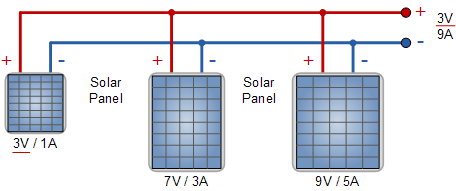
Here the parallel currents add up as before but the voltage adjusts to the lowest value, in this case 3 volts or some voltage value very close to 3 volts. Solar panels must have the same output voltage to be useful in parallel. If one panel has a higher voltage it will supply the load current to the degree that its output voltage drops to that of the lower voltage panel.
We can see that the solar panel rated at 9 volts, 5 amps, will only operate at a maximum voltage of 3 volts as its operation is being influenced by the smaller panel, reducing its efficiency and wasting money on the purchase of this higher power solar panel. Connecting solar panels in parallel with different voltage ratings is not recommended as the solar panel with the lowest rated voltage determines the voltage output of the whole array.
Then when connecting solar panels together in parallel it is important that they ALL have the same nominal voltage value, but it is not necessary that they have the same ampere value.
Connecting Solar Panels Together Summary
Connecting solar panels together to form bigger arrays is not all that complicated. How many series or parallel strings of panels you make up per array depends on what amount of voltage and current you are aiming for. If you are designing a 12 volt battery charging system than parallel wiring is perfect. If you are looking at a higher voltage grid connected system, than you’re probably going to want to go with a series or series-parallel combination depending on the number of solar panels you have.
But for a simple reference in regards to how to connect solar panels together in either parallel or series wiring configurations, just remember that parallel wiring = more amperes, and series wiring = more voltage, and with the right type and combination of solar panels you can power just about any electrical device you may have in your home.
For more information about Connecting Solar Panels Together in either series or parallel combinations, or to obtain more information about the different types of solar panels available, or to explore the advantages and disadvantages of using solar power in your home, then Click Here to order your copy from Amazon today and learn more about designing, wiring and installing off-grid photovoltaic solar electric systems in your home.





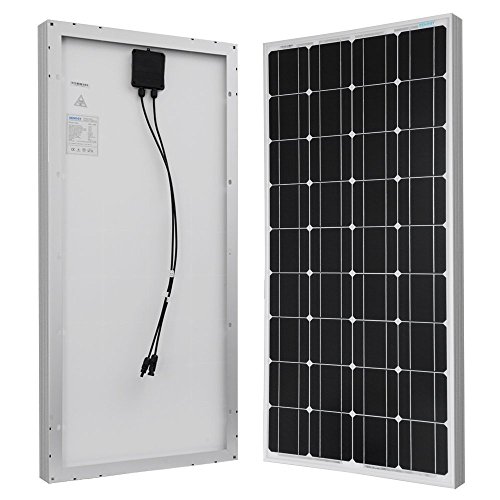





i have a 300w solar panel,a 80w solar panel,a 200ah solar battery,a 30amp controller and 1000w inverter.how do i connect?
Use the 300W panel, and sell the 80W panel. They are not compatable.
This article has been very useful and on point thanks, I would like to have more tutorials on solar systems
hello am new to solar but a do it yourself person. i have 5 270w 24v panel with a 80a mppt charge controller recently buy 3 250w 36v panels. what is the best way to wire them to 1 charger controller
3 x 24V series panels in parallel with 2 x 36V series panels will give a DC voltage of 72 volts. This will give at “Full Sun” 18.2A, 1310 watts
I have 10 solar plates of 30 w and 1.4 A each and 10 plates 65 w and 1.54 A each. How to connect for best power to run 1.2 KV inverter and charge 12 volt tabular battery.
Avez vous déjà parlé de diode et leur efficacité/utilisation?
Please read our tutorial about Bypass Diodes
Hi
I am planning for 8 panels and another string(585W) in serie for Voc 440 V and 16 A and the wiring between the panels is 4 mm but i think to use 6mm to going to my fuses(20Amp…?)and from there te same 6mm cable to my CC( victron rs 450/100)is this wiring size okay afterwards I will use 35 mm cable and 125 Amp breakers
The size, or diameter, of cable used to wire a DC solar system basically depends on two things. No1, the amount of current it needs to carry and, No2, the length of the cable run.
No1. An electric cable has a certain amount of resistance measured in Ω x metres, and since the cable is part of the electrical circuit, it can be treated as a resistor. When an electric current flows through a cable, the cable heats up. Power is lost in the form of heat. These losses are called cable losses. The amount of cable losses can be calculated as: P = I2*R (Power = Current2 x Resistance).
So for a given fixed current, a thin cable which has a higher resistance per metre than a thicker cable of the same length will generate more losses and heat up for a given current magnitude. Copper conducts electricity very well and has a low resistance per metre which is why electric cables are made from copper. Thus a 6mm2 cable is better than a 4mm2 cable, since 6mm2 cable can handle more current and is generally good upto about 30 Amperes (DC rating) or so, for short cable runs.
No2. If a cables resistance is measured in Ω x meters, it follows then that a long cable run will have a higher resistance than a short cable run of the same thickness. Thus a V = I x R voltage drop will be created over the length of the cable. Remember there are two cables, positive (+) and negative (-), so the total voltage drop will be double.
Then for long cable runs, we need to keep the cable resistance down overall to prevent large voltage drops (power loss) over the cable length and stop the cable from heating up. Thus again, a larger diameter 6mm2 cable is better for long cable runs since an increased current will increase the voltage drop and the cable will heat up more for smaller sized cables.
I currently have 4 200 watt rich solar panels max power voltage is 37.6. im going to add two more of the same panels. the charge controller is an ampinvt 60 amp. connected to 2 200ah 12v lifepo4 batteries connected in series. max voltage the charge controller is 100v. how should i wire the 6 Panels. the 4 i have connected now is in series parallel
Clearly add the two extra panels as another parallel branch, as your charge controller can only work with two panels in series (2 x 37.6 = 75.2 volts). Then, 3 parallel branches of 2 panels, (2S3P)
Thank you for your reply, instead of ordering two more i ordered 4 (Amazon prime day) so i would add these in parallel. and that would add to the amps and not voltage, correct?
Series connections increases Voltage. Parallel connections increases Current
It’s very interesting
Thanks
I currently have 16 x 550W panels with 8 each connected in series to 2 x Growatt SPF 5000 Inverters. I wish to add more panels in order to maximise the output from the inverters. The specifications of the panels are Vmp 31.6V, Imp 17.4A, Voc 37.9 and Isc 18.52A. For the inverters, the Max. PV Array Open Circuit Voltage has 450Vdc and Max. PV Array Power is 6kW.
I am considering using 11 of the existing panels for Inverter A in series thereby having Max Voc of 425.24V @ 20degrees Centigrade, Max Voltage input of 347.6V and Max Current of 17.4A.
I intend to use remaining 5 existing panels for Inverter B and ADD 6 new 550W panels.The challenge is that I cannot get panels of the same specifications. Can I connect the current and new panels as 5 current panels in series, the 6 new in series, and have both in parallel? What will be the Max Voc, Max Voltage Input and Max Current Input? What are the other options of getting them connected?
I didn’t see a Series / Parallel configuration where the inner + and – are connected and the outer minuses (-) are connected and the other pluses (+) are connected. I did this with 4 panels on my RV. My lithium battery is dead. I’ve got to turn off the main connection on the main shore panel and maybe pull the connection to the shore fridge hooked to the 2000W Inverter. I don’t know if I’m getting any solar energy. My controller is dead. We will see.
We cover series / parallel combinations in our Parallel connected solar panels tutorial